Carrying on with our theme of biodiversity in food choices, we’re taking a look at three diverse and sustainable food sources that could be saviours to savour.
We’ve seen the plant-based food and beverage market rapidly expand, with the biggest growth seen at the start of the pandemic; where consumers become increasingly aware of sustainable shopping and nutritional benefits of ethical and organic products. Net spending on meat-free produce was £595.4 million in 2020, up from £306.1 million in 2016 (The Grocer) and the benefits of plant-based protein alternatives in comparison to animal proteins are seemingly plentiful.
However, with this rising trend comes its own risks- clearly we cant continue eating animals and overfishing at such a high volume, but there is a high chance that as a result of producing increasing amounts of plant-based alternatives there will be over farming of the crops that make up their products; which are primarily soy bean and pea crops.
Monocropping can lead to soil deterioration and depletion as well as an increased risk of parasitic species and pests which in turn will lead to an increased dependence on pesticides and fertilizers, which harm the environment. This is because it removes crop rotation, which allows the soil to rejuvenate and prevents pest resistance build-up.
Aside from concerns with sustainability, the plant-based consumer market is also changing as buyers are more savvy on nutritional values and macros in meat substitutes- and are demanding more transparency on these values as well as a variation on nutrients within their food. Many plant-based products are not as healthy as one might think… and often are not naturally sourced, which is another key purchase driver for consumers.
Next in our series about the importance of biodiversity in food and beverage, we’ll be discussing how we could use biodiverse organisms which we feel are currently underutilised to solve these puzzles- potentially reducing both carbon emissions from meat, as well as issues stemming from mono-cropping of plant-based produce to create a new, innovative food source for the future.
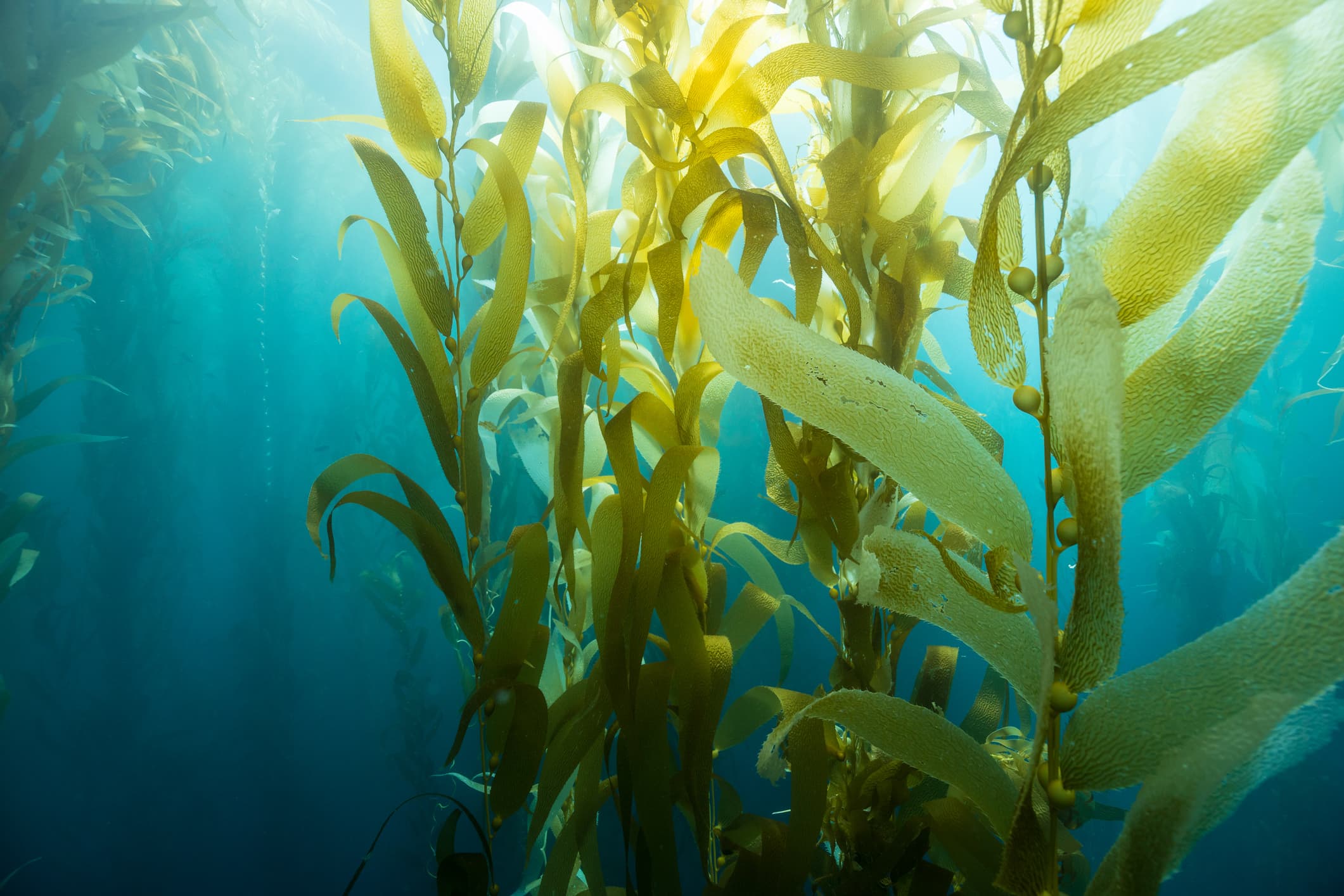
1. Seaweed
For the first course, let’s dive into seaweed, which is widely speculated to be the future of sustainable and nutritional vegetation. It’s not a brand-new idea, but a concept we are super interested in here at Family and friends.
Seaweed has been a source of nutrition in human evolution for millennia due to its versatility. In fact, it’s been used in everything from fertiliser to animal feed- it is hardy, plentiful and accessible. In food and beverage, nori (dried seaweed) is most notoriously used as a key ingredient in sushi, ramen and other delicious Japanese and oriental cuisine. But it is speculated that seaweed, the oceans own jack-of-all-trades, will show up more and more frequently in our diets.
Nutritional benefits
- High in iodine- iodine produces thyroid hormones, which control the body’s metabolism. it also contributes to a healthy thyroid gland, supports cognitive functions, skin maintenance and the nervous system
- High in fibre- Improves gut health and digestion, maintains a healthy bowel and reduces the risk of chronic disease
- Rich in calcium- for strong bone and teeth growth, healthy muscle and heart function and reducing blood pressure
- Rich in iron- the blood needs to maintain adequate iron levels to properly function. It also aids with energy levels and regulates body temperature (particularly useful in our current weather!)
- Contains potassium- to improve mood, maintain balanced blood pressure, and healthy function of all cells in the body
Sustainable?
Seaweed has minimal harm on the environment during cultivation and harvest, and can be found everywhere in every sea and ocean. There’s around 35,000 species of algae and seaweed, with many still to be discovered- meaning there is a virtually untapped supply of seaweed to utilise for the future. The methods of farming all require harvesting and processing by hand which can create jobs as well as using less energy and machinery than alternatives.
Seaweed farming could potentially even help to reverse climate change as it is a carbon negative crop- according to this study, covering 9% of the world’s oceans with kelp forests “could produce sufficient biomethane to replace all of today’s needs in fossil fuel energy, while removing 53 billion tons of CO2 per year from the atmosphere, restoring pre-industrial levels”. Not bad for a bit of slimy sea grass, right?
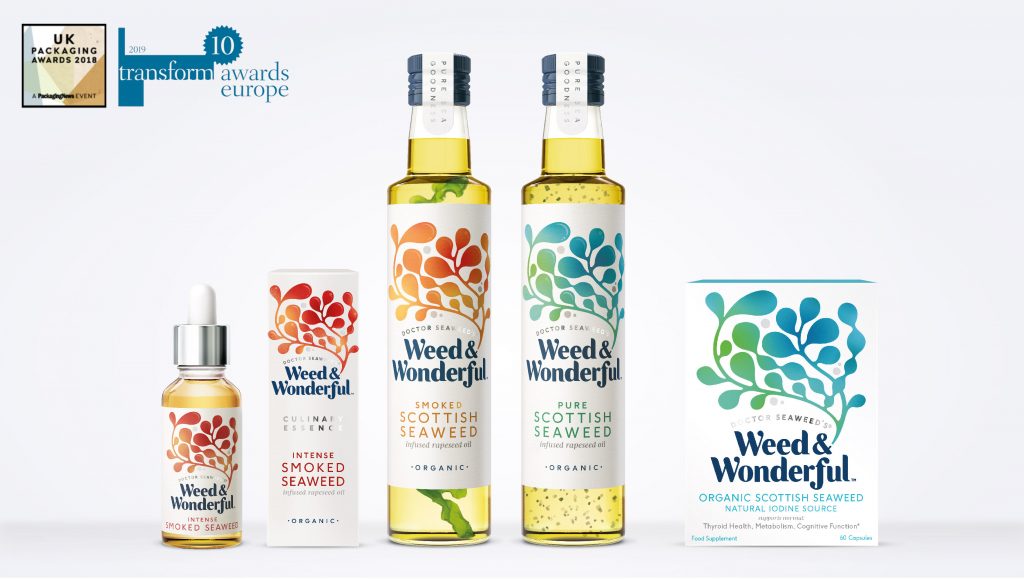
One brand we have had the pleasure of working with saw potential in the power of seaweed at a time where few dared to dream. Doctor Seaweed’s Weed and Wonderful® is never far away from our praise, founded in 2015 by a friend of the family Dr Craig Rose PhD (known in the biz as Doctor Seaweed). A marine biologist, Craig is one of the nation’s leading experts in seaweed, also founding Seaweed and Co- which farms, produces and exports the PureSea® range of formulated seaweed as a key ingredient in dozens of other brands and major supermarket products aside from Weed and Wonderful.
You can find out more about our award-winning work with Weed and Wonderful, where we helped them with brand repositioning, brand identity, strategy, naming and packaging, on our blog.
Some other brands that have used the PureSea® range in-product include The Food Doctor’s Smoked Seaweed Edamame bean mix, Rude Health Seaweed and Sesame oaty biscuits, and even Bachelors Pasta ‘n Sauce cheese and broccoli- an eclectic mix of products which showcase the adaptability of seaweed in food and beverage. The fact that major retailers like Waitrose and Sainsburys have also picked up the use of seaweed in their own-brand products suggests that the product category is gathering more and more steam, which is a fantastic outlook for the future.
As a result, the forecast is that we’re about to see a whole lot more of the green stuff as brands are discovering its wide array of health benefits and uses in food and beverage – and worth a mention that SeaGrown have been kickstarting mass cultivation, having launched the UK’s first large scale offshore seaweed and kelp farm in 2019. The future is looking bright for seaweed.
2. Insects
Because seaweed is a plant-based alternative, there is also a need for a biodiverse source of protein to satisfy meat-eaters and take into account cultural and social values. Protein is one of the most important nutrients that all humans need to survive and thrive; while meat and poultry contains the highest natural source, the damage to the environment from animal husbandry has been irreversible, so a new protein must be relied on.
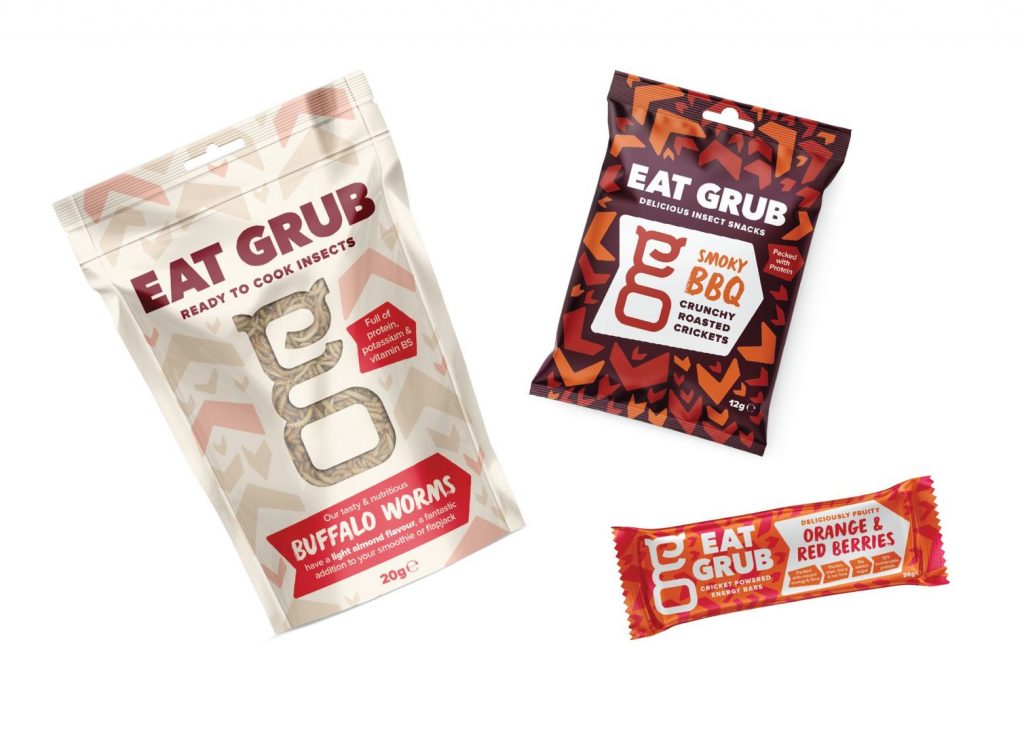
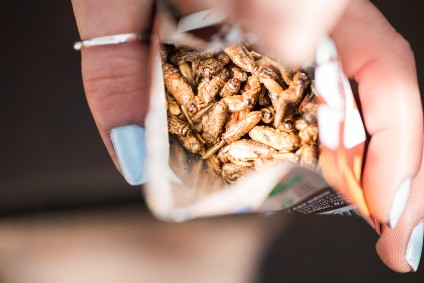
Did someone hear a buzz in the room? It sounds a bit mental, but insects could potentially become a key part of our diet in the next few years- indeed, many countries in Africa and Asia have long considered some insects a delicacy, while western society has always shunned eating pests even though they could hold the key to sustainable healthy eating.
Eat Grub are one of the most innovative brands in the insect industry, and have managed to bridge the gap between using ground insects as a supplement in dishes with the classic novelty “bug lollipop” type snacks you bring back from holidays abroad- They have an accessible range of insect grab-and-go bags using flavours and varieties familiar to everyday British consumers as well as ground bugs for cooking and supplementing meals and shakes for the nutritionalists out there. This, combined with an informative and approachable website allows prospective consumers to learn about the benefits of entomophagy and eases them into this novel industry. Salted toffee crickets, anyone?
Here are some incredible health benefits of incorporating insects into our diet.
Nutritional benefits
- High protein content, e.g. a 99.2 gram portion of grasshopper contains between 14-28 grams of protein, which is 25-60% of your recommended daily intake
- Studies show some edible insects are rich in antioxidants to protect the body against cardiovascular diseases and molecular damage
- Eating the exoskeletons of insects will mean we are consuming chitin and collagens which are packed full of minerals and probiotics including Bifidobacterium animalis.
- High amounts of natural iron for maintained focus and energy levels, immune support, increased athletic performance and many other vital bodily functions

The sustainable bug
The above infographic highlights that the ecological impact of insects is a drop in the ocean compared to other meat and pasture farming categories, as crickets can produce the equivalent of 1 kilo of protein while only producing ~1g of Greenhouse Gases- in comparison to cows producing ~2.85kg Greenhouse gases per kilo of protein produced.
Just like seaweed, they are also very cheap and easy to cultivate and do not require a lot of machinery, which in turn can benefit thousands by making jobs available to stimulate local economies. Insects can be reared via vertical farming methods which reduces the surface area of pastures and allows for massively increased efficiency, as they have much shorter lifespans- a cricket takes an average of 3-4 weeks to fully develop compared to a calf taking almost 2 years to mature.
The evidence is there to prove that once we get over our fear for creepy-crawlies, we will have found a new sustainable protein source to support us for the future. In fact, some European shops and restaurants have already started selling burgers made almost entirely of insects like the one below!
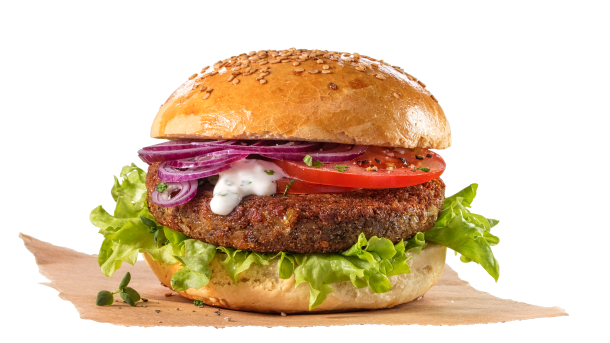
And a recent development in the world of edible insects could suggest more change is coming- as of 4th July, Ÿnsect has had the lesser mealworm approved by the European Food Safety Authority for human consumption- meaning they will be able to use powdered mealworms in foods including cereal and pasta alongside previously approved insects. Furthermore, a survey in April 2022 by Ÿnsect revealed that 51% of consumers would eat insects once the health benefits and environmental benefits were explained.
To change consumer perspective, we think branding and marketing should be provocative and irreverent to convince consumers to make the switch from meat to bugs. Incorporating insects into existing product offerings and using humour and infographics (like the one earlier) to educate is another way to make consumers aware of the benefits as many people may purchase insect foods on a whim due to cheeky branding- and end up becoming brand loyal!
This shows that if successful, effective branding can completely change consumer mindsets, societal norms and forever impact perceptions of a product category.
3. Jellyfish
But what about the future, the science-faction of biodiversity in food? As of writing, there aren’t any British brands who have been brave enough to try and introduce jellyfish to the UK food market- but that doesn’t mean that it can’t be a useful source down the line?
Jellyfish are organisms made up of 97% water and lack a brain (as we understand it) and skeleton, so are relatively low down the food chain. Because they reproduce asexually and quickly, in good conditions they can often appear in swarms and blooms of thousands at a time and can be highly disruptive to human infrastructure- there have been countless reports worldwide of jellyfish swarms shutting down coastal power stations and fisheries as they block water flow and damage equipment. They also have a negative impact on the fishing industry- some species can and do kill fish using their tentacles as well as consuming fish eggs and fry, which can debilitate local populations. Maybe a cull isn’t so bad.

So, jellyfish have high populations, very few predators, can seemingly procreate by themselves and thus are not susceptible to issues with sustainability. A good reason to put on the menu perhaps.
Jellyfish are supposedly completely tasteless, so they can be offered as a texture food or to add sustenance to existing meals which make them extremely adaptable to all cultures and tastes. Perhaps jellyfish should be marketed as a supplement rather than a food source at first, so that consumers are aware of their benefits before we eventually offer them as a primary source of protein. Although like fungi , some are toxic to humans, but others not so. If eastern cultures can do it, so can we!
Jellyfish are currently consumed in China, Japan and South Korea and can also be found in other Southeast Asian nations like Burma, Thailand and the Philippines. They are highly perishable at room temperature, so are processed almost immediately after being caught. The bell (top) is separated from the legs, and mucus/innards are removed before they are cleaned with seawater and dry-cured with salt and alum to dehydrate. The process takes around 3-6 weeks.
The dried and preserved product is then used for various delicacies; by far the most popular is pickled jellyfish salad, marinated in sesame and chilli and served cold as an appetiser, or alongside veggies or proteins including duck, chicken or beansprout. It is mainly served to enhance fishy flavours (due to the process using seawater) as well as adding a unique ‘chewy yet crunchy’ texture and mouthfeel!
Potential nutritional benefits
- Low calorie, low carbohydrates- meaning good for weight loss
- A source of selenium- one serving contains 45% of our RDA for selenium, which contributes to a healthy metabolism, as well as cell repair and protection
- Contains omega-3 and omega-6 fats, which are beneficial to reduce the risk of heart disease
- some species contain polyphenols, studies of which have shown to have antioxidant effects, promote brain function and protect against chronic diseases
- Good source of collagen, which is beneficial to tissue and bone structure as well as reduced joint pain and skin strength
We truly feel like biodiversity could seriously help us alleviate the hunger crisis and endlessly benefit the harm done on the environment- so do us a favour, go out and buy some cricket crisps to munch on, some seaweed powder to stick in your smoothie or some fried jellyfish for supper- you’ll need to get used to it in a few years!
Jellyfish Photo by Joel Filipe on Unsplash
At Family (and friends), We’ve been lucky enough to work with brands who are at the top of the most innovative industries, who care as much as we do about the importance of biodiversity and sustainability and who trust us to help them make their vision a reality through branding and design.